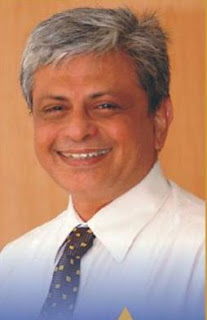The objectives of this short ten minute exercise -
- To learn a management tool that will be helpful in work life
- To apply the learning
- To start a great day using this morning ritual
Step 1 - the warm up
Keep your journal and pen at hand
Sit in a relaxed position with an intent to go into a ‘flow state’ to learn something new
Take three deep, powerful breaths to lock in your focus and start the next step
Step 2 - the learning
About OKRs
The concept of OKRs (Objectives and Key Results) was introduced by Andy Grove at Intel in the 1970s and popularized by John Doerr. This goal-setting framework helps organizations align individual and team goals with overall company objectives, driving focus, transparency, and measurable progress toward strategic targets.
Situations (examples) where this tool can be best used
- Driving company-wide strategic growth
- Enhancing cross-department collaboration
- Boosting team performance and innovation
The top three mental muscles (competencies) developed by practicing this tool
- Goal-Setting - OKRs help set clear, measurable, and aligned objectives
- Performance management - OKRs enable setting clear goals, tracking progress, and providing constructive feedback
- Strategic planning - OKRs align with organizational goals and encourage strategic thinking
A corporate story to understand the usage of this tool
Lee Jae-Yong’s story about driving Samsung’s growth
Context
Lee Jae-Yong, Vice Chairman of Samsung Electronics, has been instrumental in transforming Samsung into a global technology leader. Under his leadership, the company focused on innovation, diversification, and market expansion.
This is how the story about applying OKRs at Samsung goes -
Objective - Strengthen Samsung’s leadership in AI, 5G, and semiconductor technologies
Key Results
- Invest $20 billion in AI and 5G R&D within three years
- Increase semiconductor market share from 40% to 50% by launching next-gen chips
- Expand global AI research centers from 7 to 12 by 2025
Objective - Drive sustainable growth through ESG (Environmental, Social, and Governance) initiatives
Key Results
- Reduce carbon emissions by 30% across manufacturing units by 2030
- Achieve 100% renewable energy usage in all U.S. and European facilities
- Launch a global e-waste recycling program covering 50 countries
Impact
By implementing OKRs, Samsung aligned its leadership, R&D, and sustainability teams toward long-term strategic goals. This structured approach enabled rapid technological advancements and positioned Samsung as an industry leader in innovation and sustainability.
A story from the World Wars
My personal story
Context
I was tasked with identifying top performers of the year and then giving them awards in an eventful annual family day.
In what ways could I achieve excellent results?
What was the best way to plan the whole thing?
Objective - Create a great family event to recognize the top performers of the year
Key results
Conduct a fair and transparent top performer awards process
Plan and execute an eventful annual family day
Enhance employee engagement through the event
Impact
I created granular plans for each of the three and executed them successfully
Critical view of the above
- I did not define any measurables. This is not correct
- The Objectives are generally audacious. Mine was not such a great OKR
Step 3 - the reflection
Sit back, go down memory lane, think of various events in your work life where you could have used this learning.
If nothing comes to mind, think of a situation that would help you answer any one of these interview questions.
- “OKRs often require collaboration across different teams. How have you worked with other departments to achieve shared objectives?” - Speak about how you used your communication skills, teamwork, and stakeholder management
- “OKRs encourage setting ambitious goals. Can you share an instance where you set a stretch OKR” - Share how you created and achieved an ambitious goal using OKRs. Add flavour by sharing your leadership style
- “How do you define success in your role?” - Share a story to demonstrate your data-driven mindset, ability to set measurable goals, and results orientation
Step 4 - the practice
Apply your learning to the situation you selected above.
- Objective
- Key results
- KR 1
- KR 2
- KR 3
- ….
Step 5 - the victory lap
Celebrate your achievement for a minute. Maybe a quick victory lap doing some energizing exercise?
**
To those who felt, “Already there are a number of systems and processes to deal with. Why add a new one to the list especially if it requires efforts to integrate with existing systems? Why make life miserable?” - Do you feel that the last ten minutes were worth the effort?
I must tell you that most inspirational companies have institutionalised this tool. These four are real drivers - Intel, Google, LinkedIn, Microsoft
This exercise is not only about management tools. It’s about building a neural pathway. And it’s about my mantra for creating small daily acts of feeling successful and happy.
Don’t forget to carry this image 👇 in your mind. There could be a great situation where you may want to use the tool. Keep a log of all such situations. This practice will help you when you want to train someone.
My congratulations for your first dose of the day of success and happiness. Have a great day ahead.

No comments:
Post a Comment